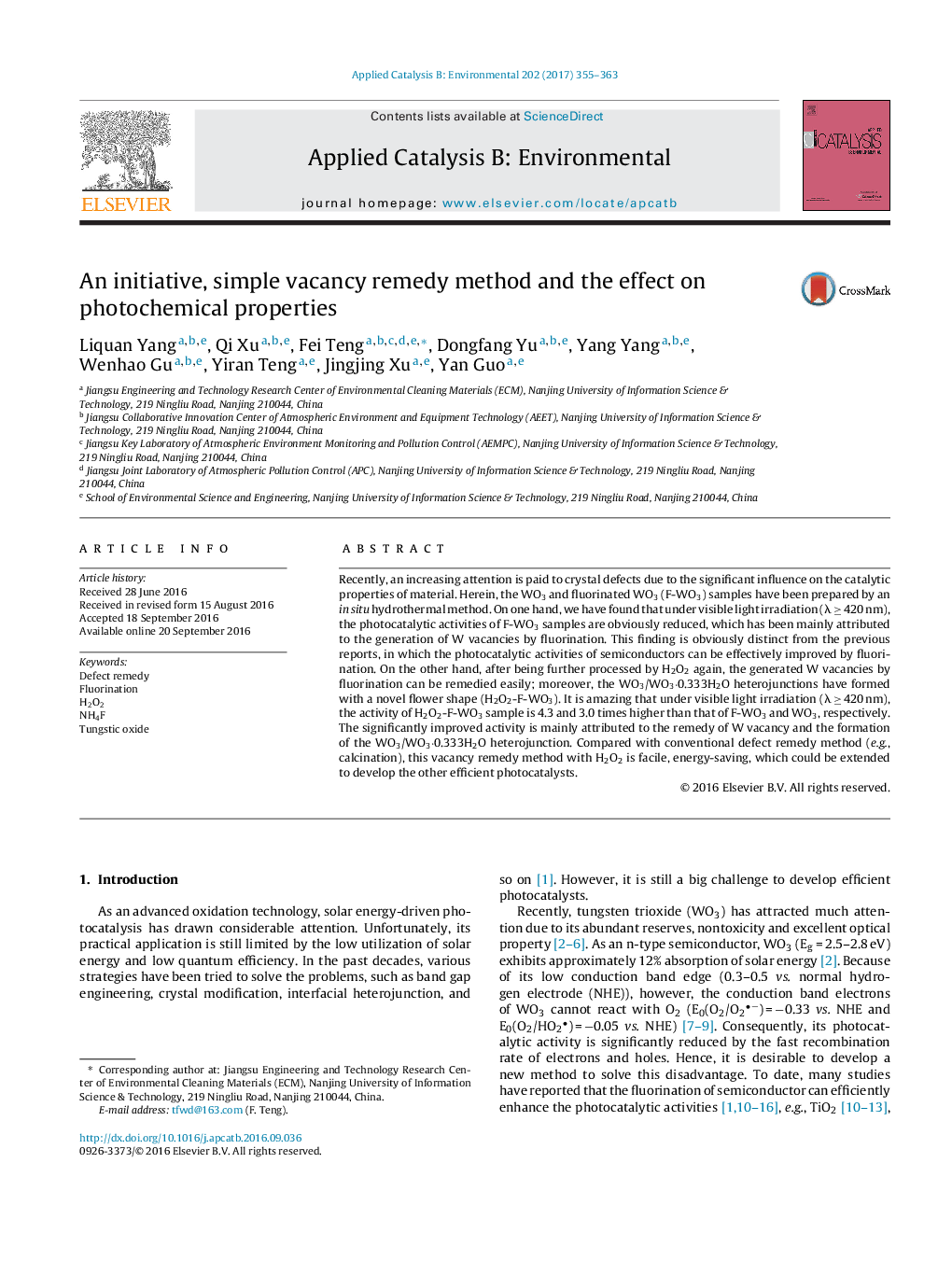| کد مقاله | کد نشریه | سال انتشار | مقاله انگلیسی | نسخه تمام متن |
|---|---|---|---|---|
| 6454854 | 1418818 | 2017 | 9 صفحه PDF | دانلود رایگان |
• We have developed a new, mild defect remedy approach with H2O2.
• The remedied sample shows a significantly high visible light activity.
• It is resultant from the defect remedy and the formation of a heterojunction.
• This approach could be extended to develop the other efficient photocatalysts.
Recently, an increasing attention is paid to crystal defects due to the significant influence on the catalytic properties of material. Herein, the WO3 and fluorinated WO3 (F-WO3) samples have been prepared by an in situ hydrothermal method. On one hand, we have found that under visible light irradiation (λ ≥ 420 nm), the photocatalytic activities of F-WO3 samples are obviously reduced, which has been mainly attributed to the generation of W vacancies by fluorination. This finding is obviously distinct from the previous reports, in which the photocatalytic activities of semiconductors can be effectively improved by fluorination. On the other hand, after being further processed by H2O2 again, the generated W vacancies by fluorination can be remedied easily; moreover, the WO3/WO3·0.333H2O heterojunctions have formed with a novel flower shape (H2O2-F-WO3). It is amazing that under visible light irradiation (λ ≥ 420 nm), the activity of H2O2-F-WO3 sample is 4.3 and 3.0 times higher than that of F-WO3 and WO3, respectively. The significantly improved activity is mainly attributed to the remedy of W vacancy and the formation of the WO3/WO3·0.333H2O heterojunction. Compared with conventional defect remedy method (e.g., calcination), this vacancy remedy method with H2O2 is facile, energy-saving, which could be extended to develop the other efficient photocatalysts.
An new post-synthesis method can not only remedy vacancies, but also favor for the formation of a WO3/WO3·0.333H2O heterojunction.Figure optionsDownload high-quality image (121 K)Download as PowerPoint slide
Journal: Applied Catalysis B: Environmental - Volume 202, March 2017, Pages 355–363
